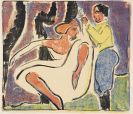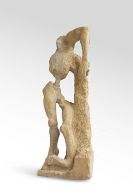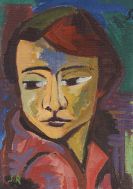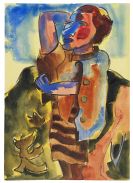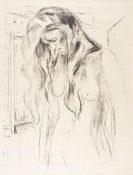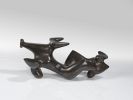
Milton Avery
Sand Bank/New York
1893 -
New York
1965
Milton Avery was born at Sand Bank, New York, today known as Altmar, on 7 March 1893. After studying for a while at the Connecticut League of Art Students in Hartford under Charles Noel Flagg and at the Art Society School there under Albertus Jones, Avery worked in manufacturing and with an insurance company until 1924. He moved to New York in 1925 and married the artist Sally Michel, an illustrator, a year later.
He had his first one-man show as early as 1928 at the Opportunity Gallery in New York. The decades that followed saw him show work at numerous exhibitions mounted by New York galleries and American museums. Milton Avery's preoccupation with French Fauvism and German Expressionism led him to develop a simplified formal idiom distinguished by clarity of line and an expressive palette. Whereas Avery's early figurative drawings and paintings from the 1930s attest to affinities primarily with the work of Ernst Ludwig Kirchner, by the 1940s he was discernibly close to Henri Matisse.
As the American upholder of Matisse's colouristic doctrine, Milton Avery developed the French artist's decorative colour surfaces into subtly toned colour zones, thus breaking the ground for the Colour Field painting of Mark Rothko and Adolph Gottlieb, both of whom were friends of his. Even though his style was close to abstraction, Milton Avery nonetheless clung to representation throughout his entire career. Classical motifs and subject matter in portraits, still lifes and coastal landscapes were his main thematic areas and genres.
Prolific as a painter, graphic artist and ceramist, Milton Avery received numerous awards from American art institutions before he died in 1965 although he only really became famous posthumously. Now he is acclaimed as one of the most influential US 20th-century artists.
Would you like to sell a work by Milton Avery?
Infos for seller
